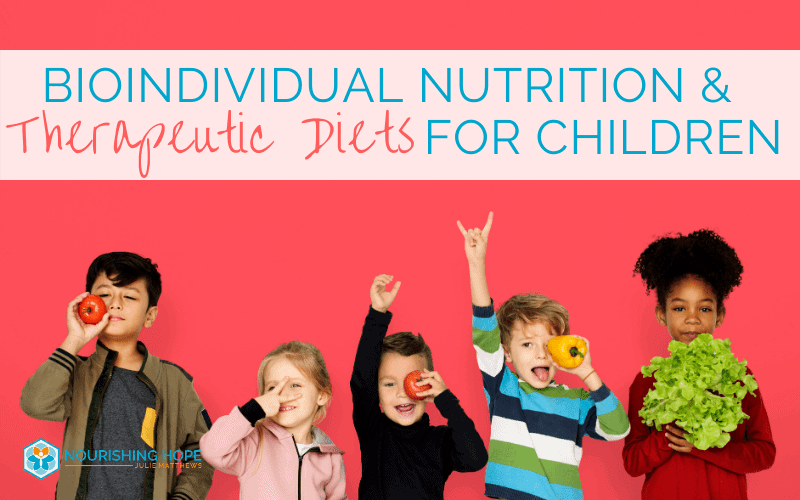
Personalizing Your Diet and Nutrition Approach
Once you’ve made changes in your child’s diet (or even your own) and seen some improvements, now it’s time to customize your approach, optimizing the food your child eats to suit their unique needs. There are many special or therapeutic diets; however, it can be confusing to know what to do next and which to choose.
Functional medicine doctors, nutritionists and researchers are realizing that a personalized nutrition approach leads to the best results for the individual and will be the way nutrition is practiced, now and into the future.
In fact, I was excited to see a recent position paper by The American Nutrition Association entitled “Toward the Definition of Personalized Nutrition: A Proposal by The American Nutrition Association”1 explained the importance of utilizing Personalized Nutrition (PN) to support clients and patients optimally.
“PN [Personalized nutrition] is a field with great potential to address chronic disease and optimize human health and performance.”
For 20 years, I’ve been helping children with autism and ADHD and their families as a Certified Nutrition Consultant and  published researcher. I created Nourishing Hope to help children with autism and ADHD improve their health, learning, and behavior through improved diet and nutrition choices. Through my years in nutrition practice, I recognized that children respond differently to varied foods and diets. And because there is no “one-size-fits-all” diet, I developed the BioIndividual Nutrition® approach, a way of personalizing diet and nutrition to the individual’s unique biochemistry and needs.
published researcher. I created Nourishing Hope to help children with autism and ADHD improve their health, learning, and behavior through improved diet and nutrition choices. Through my years in nutrition practice, I recognized that children respond differently to varied foods and diets. And because there is no “one-size-fits-all” diet, I developed the BioIndividual Nutrition® approach, a way of personalizing diet and nutrition to the individual’s unique biochemistry and needs.
And because BioIndividual Nutrition is addressing the underlying factors, it can help a child with autism or ADHD, or an adult with IBS or autoimmune challenges.
The latest nutrition science shows that many children (and adults) with neurological conditions including ADHD and autism suffer reactions relating to food compounds such as: salicylates, phenols, histamine, oxalates, glutamate, and FODMAPS.
I have studied and researched the most effective therapeutic diets to help you really drill down and make the right choices for your child. In my Nourishing Hope for Healing Kids nutrition program for parents we go through a process of questionnaires, food elimination and inclusion to fine tune your child’s nutritional intake and tailor their diet to their specific needs. And if you are a nutrition or health practitioner, you can learn more about my professional training.
Here’s more on these special diets…
Low Salicylate Diet
Salicylate or salicylic acid is the substance in aspirin, isolated from white willow bark. It is also found in many other foods. When it cannot be broken down properly, it can cause significant symptoms in children and adults.
Salicylates are natural substances created by plants, a type of phenol, used as a defense mechanism against organisms eating the plant.1 But these natural food chemicals can also negatively affect humans. particularly those that can’t process them well. Phenols require a biochemical process called sulfation. People with ADHD, autism, IBS, and depression tend to have low sulfation.

They are in many fruits, vegetables, and spices. Even worse: phenols are often artificially added to foods – artificial coloring, artificial flavoring, and artificial preservatives such as BHA, BHT, TBHQ are all phenols that many people struggle to metabolize adequately, due to insufficient phenol sulfotransferase (PST) enzymes to aid the sulfuration pathway.2
Phenols can then act as a neurotoxin and cause hyperactivity, irritability, aggression, inattentiveness, headaches, sleeping challenges, as well as being an inflammatory agent leading to skin rashes and red cheeks and ears.
Low Amine and Histamine Diets
Amines are in foods that involve fermentation or protein breakdown, and can be found in both fresh produce (bananas, avocados, and tomatoes) and processed foods (cheese, chocolate, fish products, and yeast extracts). Histamines are the most well known type of amines, as everyone knows someone who suffers from hayfever and needs to take antihistamines regularly. But your client can also consume histamines in yourtheir food, leading to long term inflammation, skin irritation, diarrhea, and headaches.3
Amines can cause any of the physical and behavioral symptoms of salicylates above, as well as migraines, dizziness, nausea, acid reflux, irritated or itchy skin, trouble falling asleep, facial flushing, and gastrointestinal cramps.
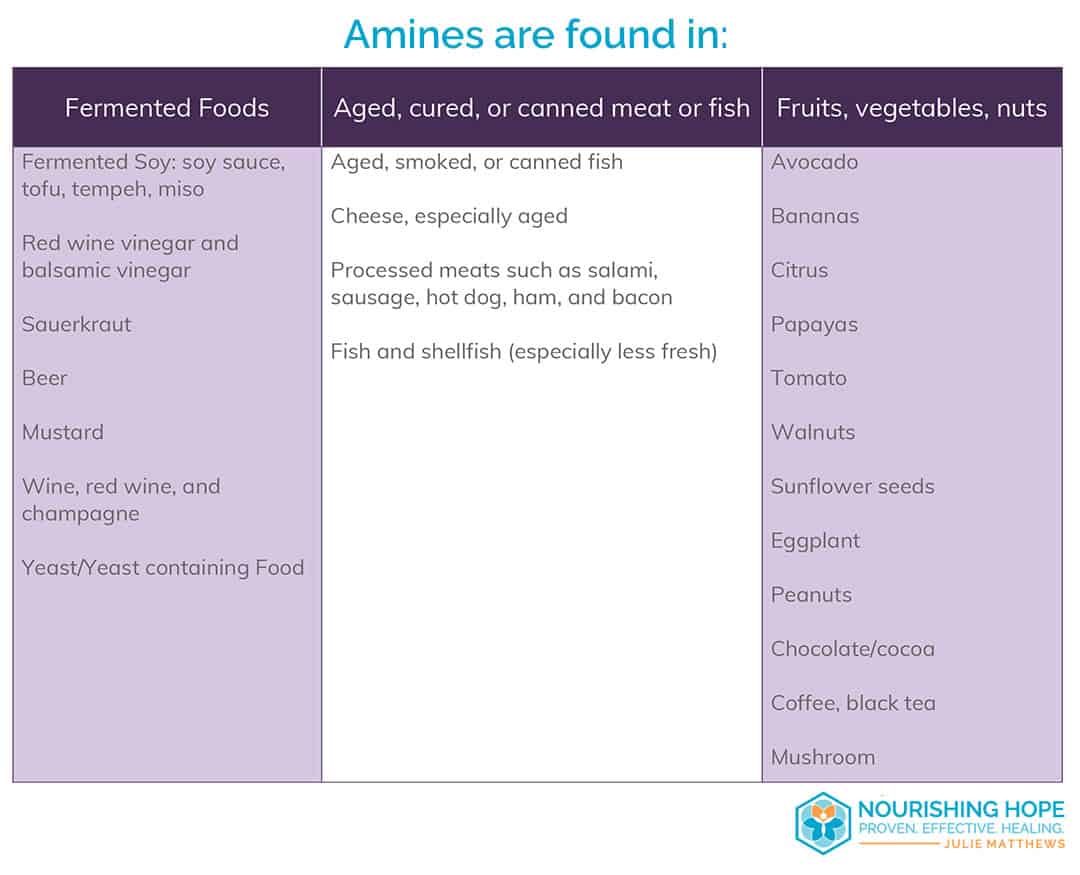
Food Allergens and Sensitivities
Most common food sensitivities are:
- Gluten
- Casein
- Soy
- Corn
- Eggs
- Citrus
- Nuts
- Peanuts
- Seafood
- Chocolate
- Sugar
They can cause: gastrointestinal symptoms such as gas, diarrhea, constipation, hyperactivity, nausea, headaches, runny nose, pain, anxiety, and depression.
Elimination Diet
An elimination diet is a short-term process that helps you identify food sensitivities.
Theoretically, any diet that “eliminates” foods for the purpose of reducing an adverse reaction can be called an “elimination diet.” Occasionally, the salicylate diets above are referred to as elimination diets; however, most frequently (and the definition we’ll be using in this guide) elimination diets address immune system reactions such as food sensitivities, such as an IgG antibody response, food allergy, or other inflammatory response.
By removing certain foods, you can look for the reduction of symptoms to see if you are on the right track. Often an elimination diet has a “provocation” phase where foods are reintroduced a few weeks later. Here you can check for the return or flare up of certain symptoms associated with food intolerance The elimination stage lasts 2-3 weeks, and then the reintroduction phase can last a further 3 weeks. This Elimination Diet testing phase is not a forever diet. However, once food reactions are determined, depending on the reaction and reason, some foods may need to be avoided for the long term.
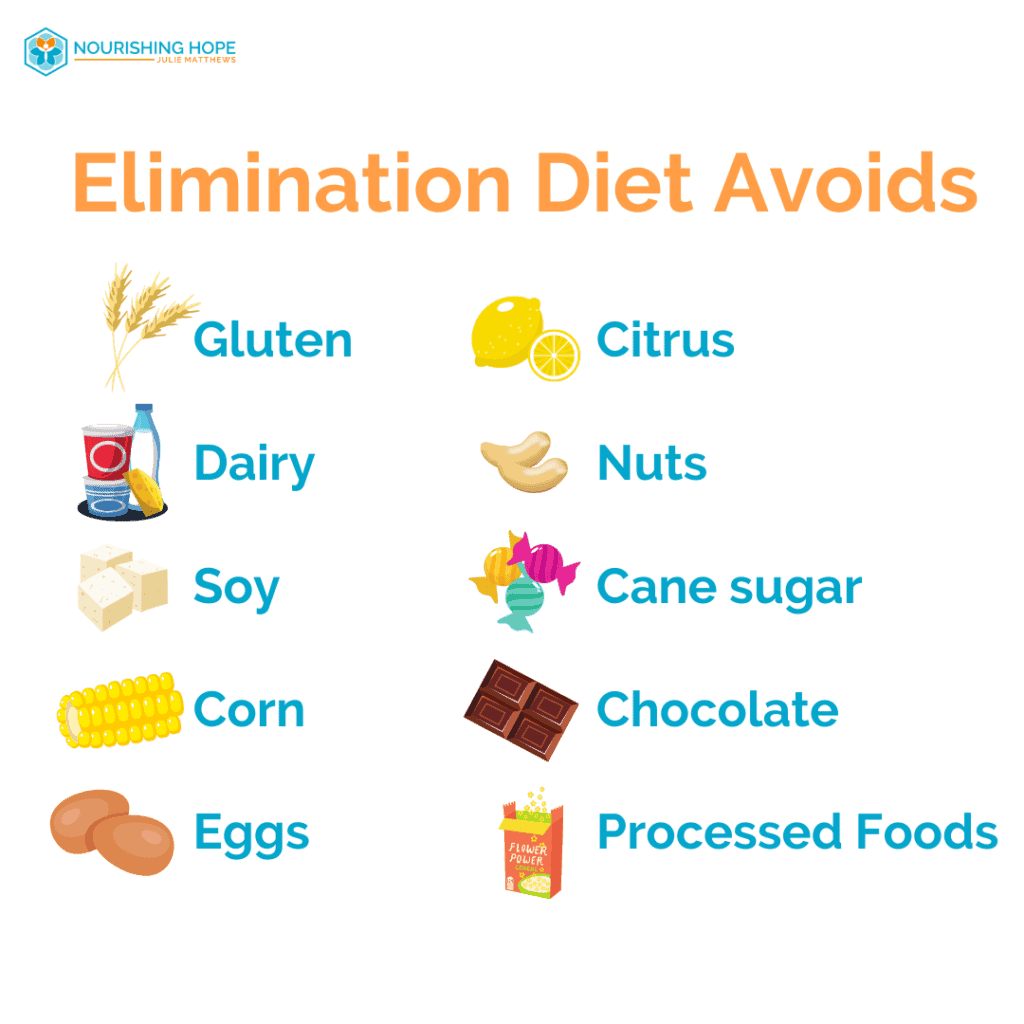
Rotation Diet
The rotation diet is similar to the elimination diet, in that you remove different foods from your client’s diet in order to figure out if they’re causing a reaction. In the case of a rotation diet, you rotate different food groups over a period of two to four days – so on a four day rotation diet if you eat chicken on the first day, you can’t eat it again until four days later. Some individuals with food sensitivities or mild allergies adopt a rotation diet long-term to prevent food reactions, as the short-term break from the foods can reduce the inflammatory response and allow them to be better tolerated.. Commiting to a long term rotation diet can be challenging, but many peopleclients enjoy the flexibility of being able to eat favorite foods sometimes.
Grain-Free Diets
Why reduce grains and starches?
Grains and starches can be difficult to digest for some people, such as those with microbiome imbalance and gastrointestinal disorders, and can cause irritation – and even inflammation – of the gut, impacting the gut microbiome.7
And gastrointestinal issues are very common in neurological conditions including autism.8 Some people have reduced numbers of carbohydrate digesting enzymes or an imbalanced microbiome. Reducing starch and grain intake gives the gut a chance to heal.
There are many diets that avoid grains and starches. The Specific Carbohydrate Diet and the Gut and Psychology Syndrome Diet, explained below, focus on removing grains and polysaccharide starches from the diet, because their focus is on healing the body through the gut. The remainder of the grain-free diets can help the gut as well, but their principles are different and they have different goals.
Grain-Free Diets include:
- Specific carbohydrate Diet
- GAPS
- Paleo
- Autoimmune Paleo
- Ketogenic Diet
Specific Carbohydrate Diet
The Specific Carbohydrate Diet (SCD) is designed to restrict disaccharides (double-sugars) and polysaccharides (starches), however, natural monosaccharides, such as honey, fruits, and non-starchy vegetables are allowed. SCD was developed on the basis that some individuals struggle to digest carbs, due to damaged mucosa in the small intestine.9 An inability to digest double sugars – which are eaten by gut bacteria and yeast – causes microbial overgrowth, and restricts enzymes from breaking down carbohydrates further. This contributes to more damage in the gut. Avoiding eating double sugars and starches should bypass this, and help to heal the gut.
It is often used to help those with gastrointestinal symptoms like chronic diarrhea and intestinal pain.
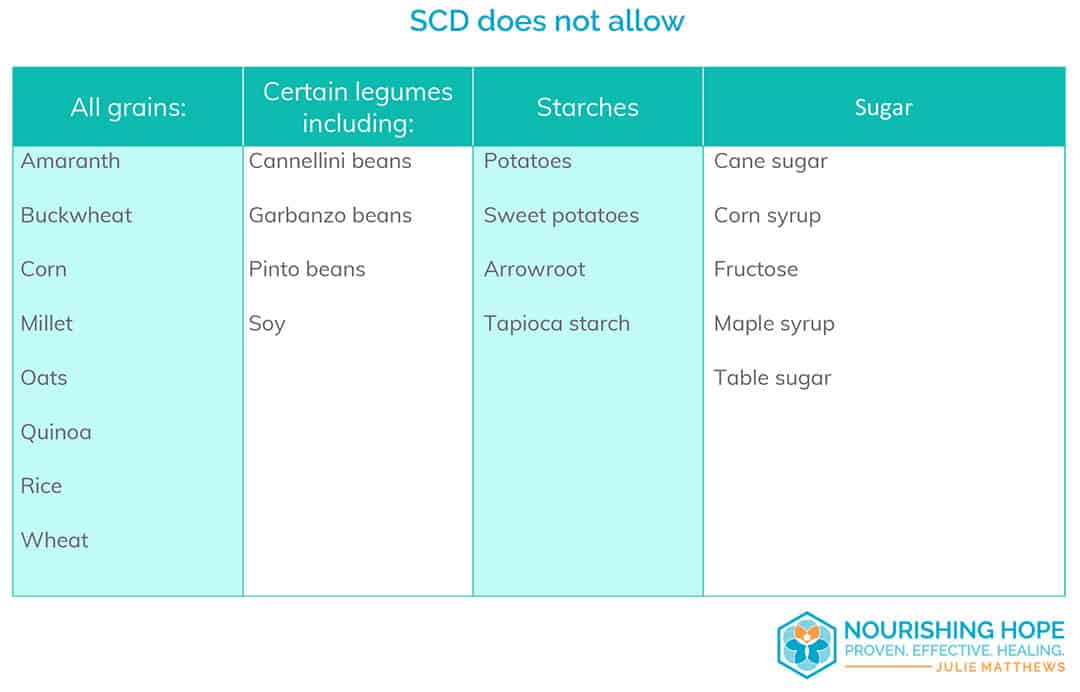
Gut and Psychology Syndrome (GAPS) Diet
The Gut And Psychology Syndrome (GAPS) diet is based on the diet principles on the Specific Carbohydrate Diet above, with a few tweaks. The GAPS diet is named for the link between the gut and brain, and more emphasis is placed on bone broths and eating fermented foods to help heal the gut microbiome. This diet was created for people with gastrointestinal problems that are causing neurological symptoms; such as, autism and ADHD.
Paleolithic Diet
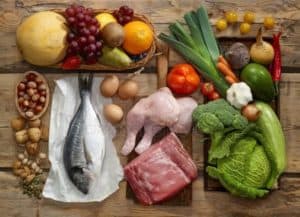 Known as the caveman diet, The Paleolithic (or paleo) diet has been designed to mimic the diet of our ancestors, before we began to farm and process our food. As the paleo diet is hunter-gatherer in style, the emphasis is on: wild fish, grass fed beef, free-range chickens and eggs – along with vegetables, fruit, mushrooms, and nuts.
Known as the caveman diet, The Paleolithic (or paleo) diet has been designed to mimic the diet of our ancestors, before we began to farm and process our food. As the paleo diet is hunter-gatherer in style, the emphasis is on: wild fish, grass fed beef, free-range chickens and eggs – along with vegetables, fruit, mushrooms, and nuts.
Since this diet avoids grains it is used to counteract gastrointestinal issues, and was first introduced for this purpose by gastroenterologist, Walter L. Voegtlin in 1975. Paleo has become popular with a wider audience due to the emphasis on wholefoods, and avoiding processed food, but most importantly those who follow the diet have a wider, more diverse microbiome, which can reduce gastrointestinal symptoms.10
The Paleo diet restricts: grains, legumes, dairy, and refined sugar.

Autoimmune Paleo Diet
A stricter form of the Paleo Diet, often used to counteract the symptoms of autoimmune disorders, the diet further restricts foods that can cause inflammation in some individuals.11
This diet removes the foods on Paleo and others, including: grains, legumes, dairy, eggs, nuts, seeds, alcohol, coffee, food additives, processed foods, and nightshades.
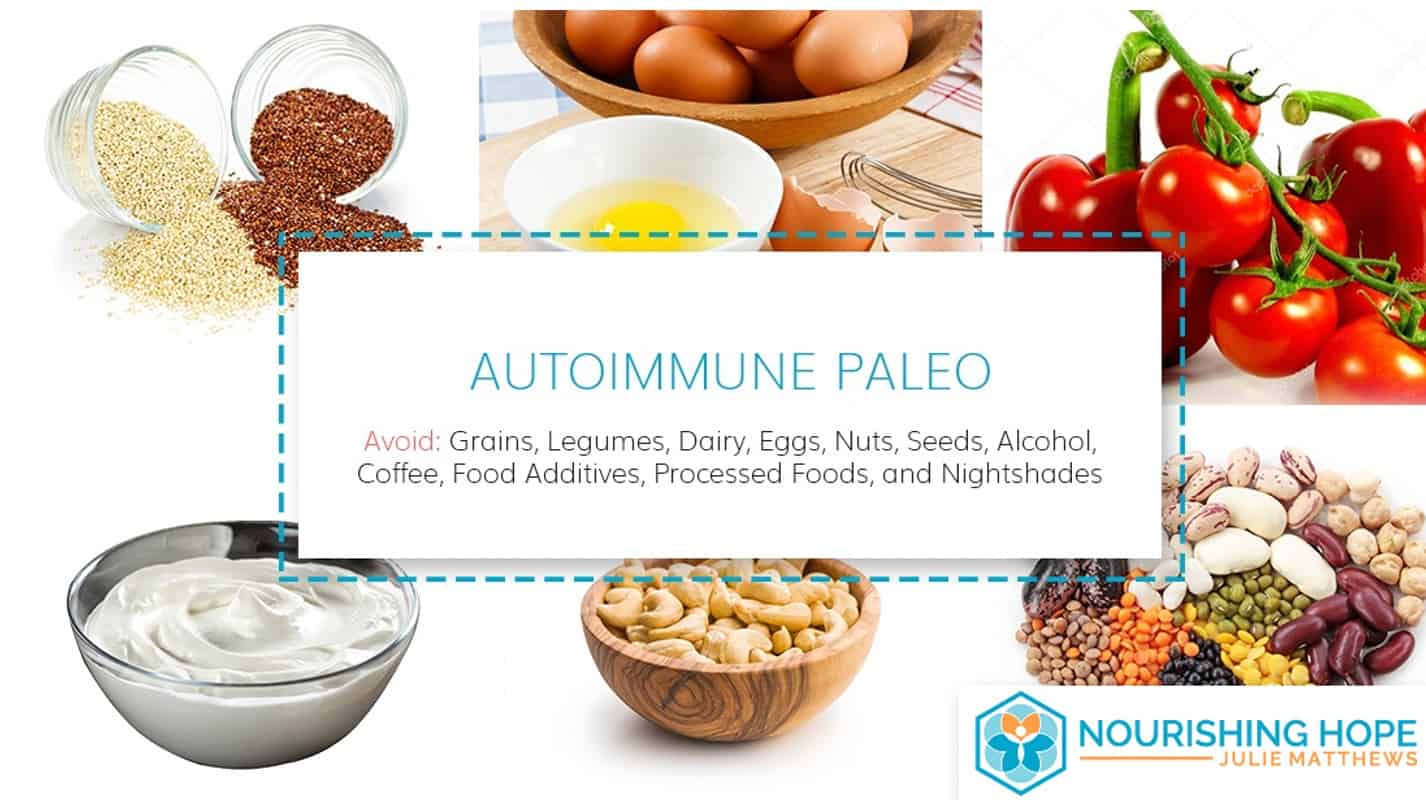
A grain-free diet can often help when you’ve tried a gluten-free diet but it’s not enough to relieve your clients digestive symptoms. Many of my clients with autism have made a dramatic shift physically, cognitively, and behaviorally from an SCD, GAPS or Paleo diet.
Ketogenic Diet
The ketogenic diet is similar to the paleo diet, in that it avoids several foods very high in carbohydrates such as grains and starches. However, this diet is radically different in it’s macronutrient ratios and purpose. The ketogenic diet is a very high fat, very low carbohydrate diet that uses fat (not carbohydrates) for energy. Designed to reduce seizures in children with epilepsy, it has a number of neurological benefits, and can improve behavior in children with autism.12
Because it is a restrictive diet, it is important to work with your doctor, and have an understanding of supplementation. The keto diet places an emphasis on healthy fats, adequate protein, and vegetables, but restricts most fruits.
The ketogenic diet restricts most carbohydrates including: grains, fruits, sugar, honey, starches, beans.
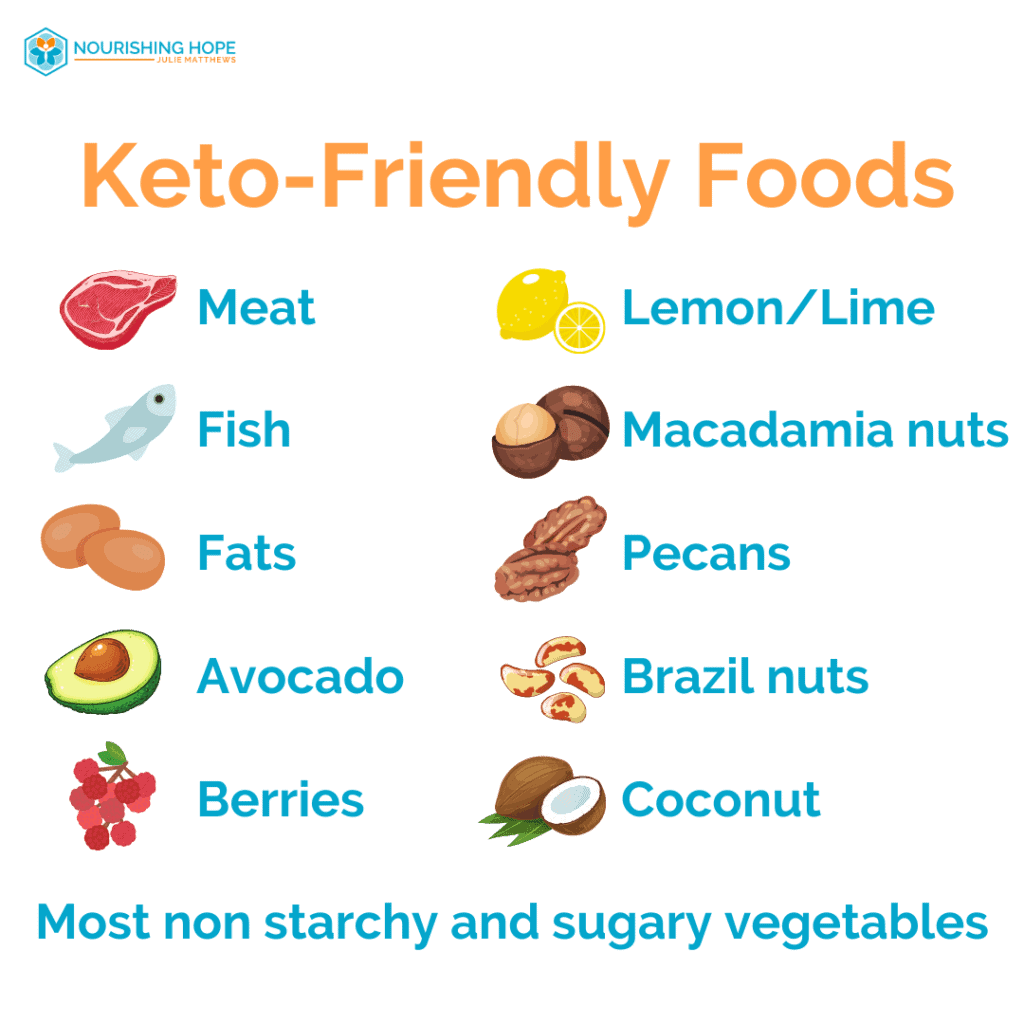
The ketogenic diet can make a huge difference for clients with certain metabolic conditions, seizures, and neurological disorders.
Low Oxalate Diet
Oxalate is an antinutrient found in plants, where they have a number of functions, one of which is to deter animals from eating their leaves. Normally, your gut microbiome deals with oxalates, but an imbalance in your gut bacteria can lead to higher oxalate levels. High oxalate levels can be a problem, as they can lead to malnutrition, and, through leaky gut, can scatter around the body causing inflammation.
Oxalates can cause mineral deficiencies, dysbiosis, and mitochondrial dysfunction. High oxalate has even been linked to autism13 and chronic disease.
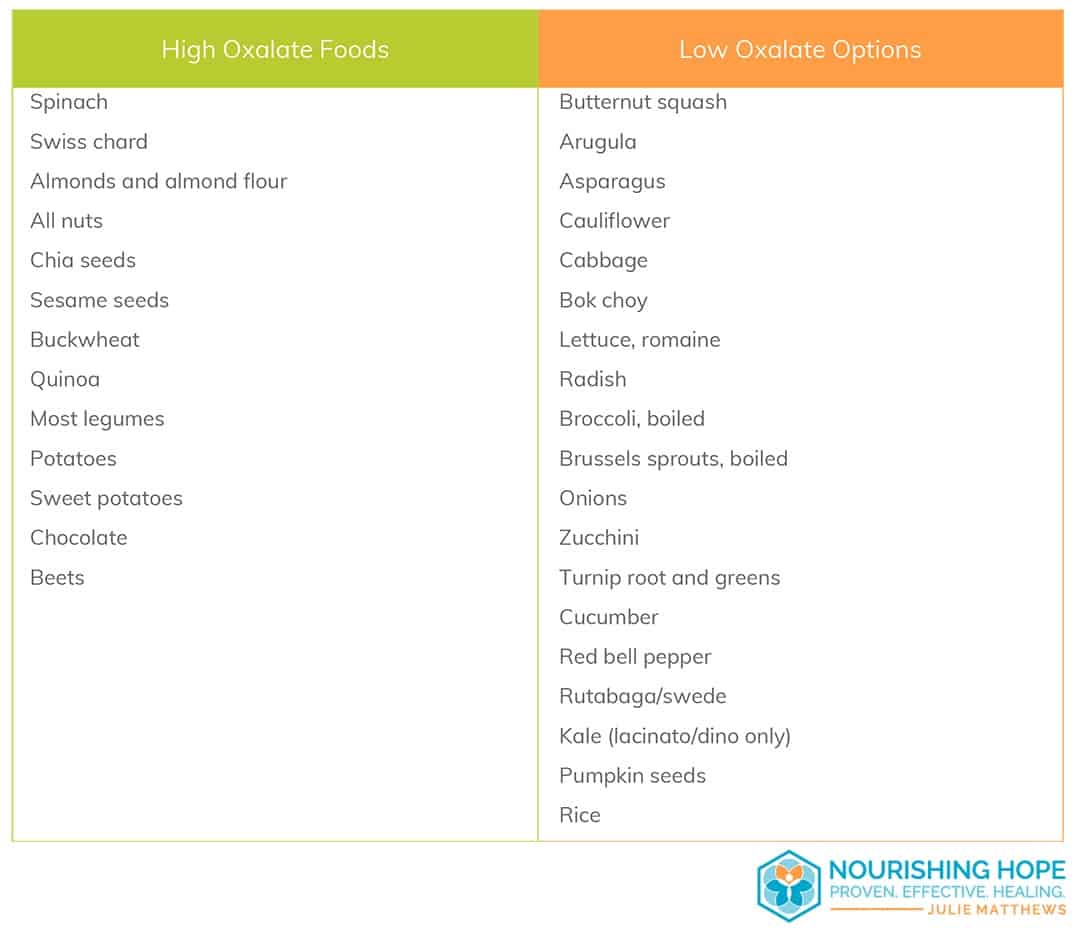
The low oxalate diet is designed to restrict the intake of high oxalate foods, with the understanding that there is no way to eradicate oxalates from the diet completely. Instead, the diet concentrates on limiting exposure where possible, with some flexibility. Low oxalate is a helpful tool to use alongside diets like GFCF or SCD to fine-tune your diet when needed.
Oxalates are very high in: spinach, nuts, seeds, legumes, grains, certain fruits, sweet potatoes, beets, chocolate.
Oxalates can cause pain, inflammation, sore joints, pain when urinating, fatigue, brain fog, slow growth, gastrointestinal issues, and microbiome imbalance.
Oxalates are one of the nutrition concepts I find has the most myths and misconceptions out there in the mainstream nutrition conversation. If you are a practitioner, Download 16 Oxalate Myths and discover what I’ve been teaching my BioIndividual Nutrition students and clients in my last 12 years of working with the low oxalate diet.
Low FODMAPs Diet
FODMAPs stands for fermentable oligo-, di-, monosaccharides and polyols – which are short chain carbohydrates and alcohol sugars that the body finds hard to digest. Instead, when you consume FODMAPs, they travel to the gut and are a food source for your gut microbiome. Unfortunately, when gut bacteria eat FODMAPs they can produce hydrogen or methane gas – causing gastrointestinal discomfort in sensitive people. FODMAPs can also trigger diarrhea by bringing liquid into the gut. FODMAPs have been linked with IBS, and a Low FODMAPs diet has shown to reduce IBS 14 15
Low FODMAPs Diet restricts: fructose, cow and soy milk, wheat, legumes, certain fruits (including apples, pears, watermelon, and cherries), certain vegetables (including brussels sprouts and the onion family).
While FODMAPs can cause symptoms in some individuals, they are prebiotics, sources of fiber that helphelps the growth of beneficial bacteria. So as a practitioner, it’s important to know when to use a low FODMAPs diet and when not to.
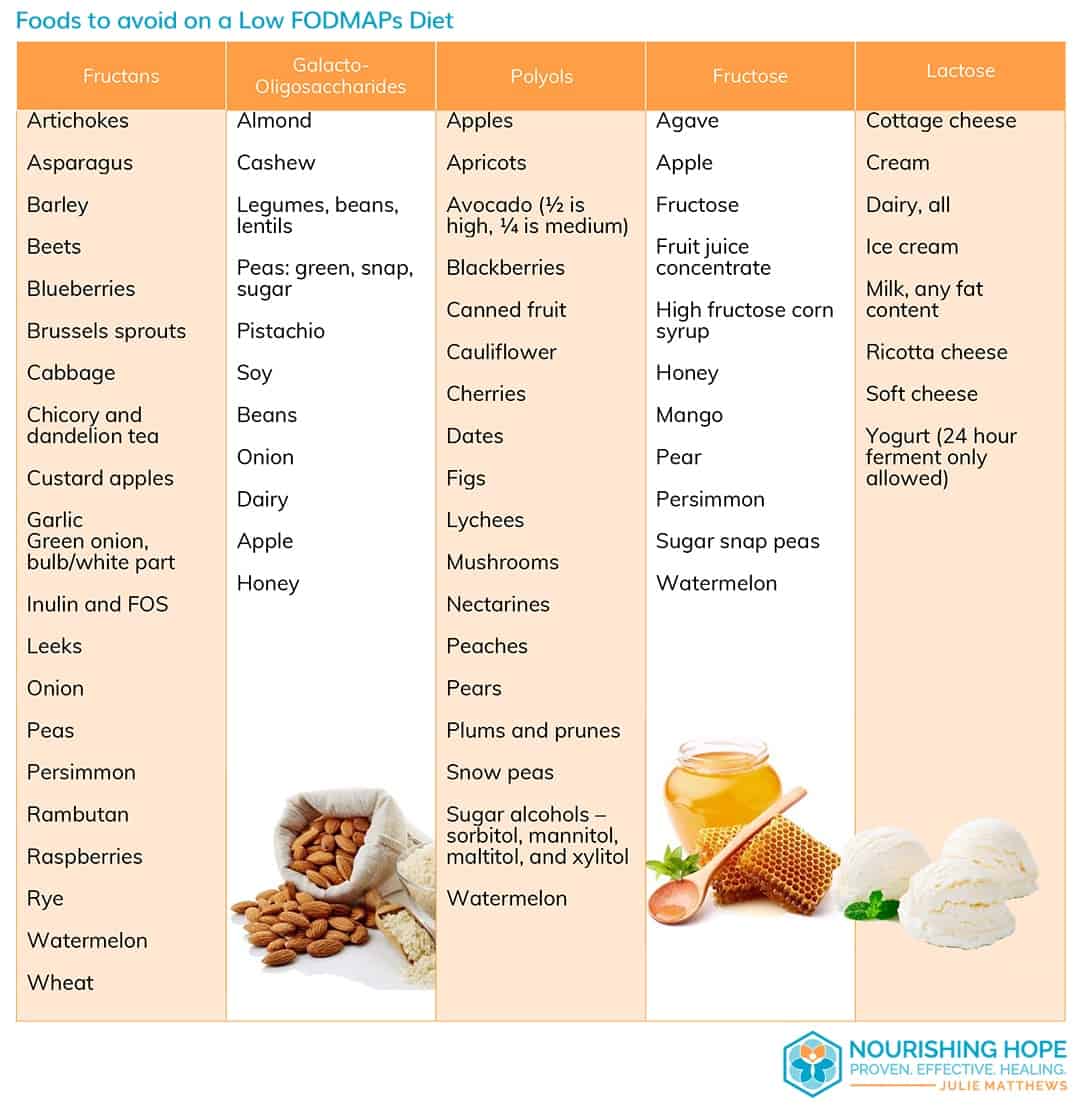
Lectin-Free Diet
A lectin-free diet is designed to reduce gastrointestinal distress, and toxicity.16 Raw beans contain high levels of lectin, which can be dangerous for humans, but once cooked, the legumes contain a manageable amount for most people. However, for an individual with sensitivities, remaining lectins can cause issues in the gut, as they can bind to the cells that make up the gut wall.
Lectins are found in: legumes, peanuts, nightshade vegetables, dairy, grains.
Low Sulfur Diet
While the body needs sulfur to aid the detoxification pathway, some people are unable to tolerate large amounts in their diet. Your client may have limited tolerance to thiol, a sulfur compound found in many foods and needed to make cysteine – one of the amino acids that make up glutathione.
The cystathionine beta-synthase (CBS) enzyme is important sulfur metabolism and detoxifying excess sulfur. Children and people with autism often have a mutation in the CBS enzyme, increasing the risk of gastrointestinal tract disorders.17 The process of recycling sulfur requires a lot of energy on a cellular level, contributing to low ATP levels. Eating foods containing sulfur only makes the problem worse.
Alternatively, a sensitivity to sulfites is also possible – these additives often used as a form of food preservation in processed food, but found naturally in other foods. When sulfites cannot be converted to sulfate, sulfites can build up. As a result your client or patient may struggle to handle sulfur and sulfite, and this can cause gastrointestinal upset.
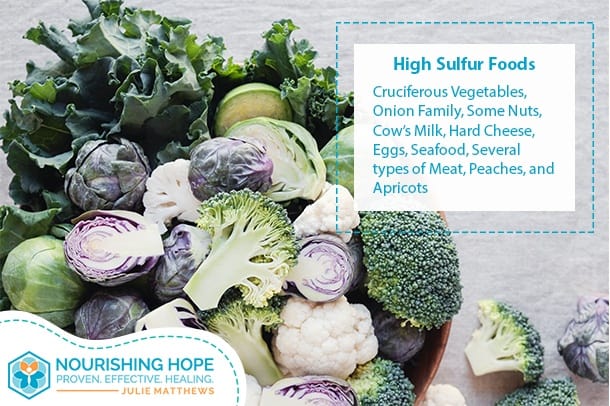 There are links between a diet high in sulfur and microbiome imbalances,18 and the low sulfur diet is popular with patients who have inflammatory bowel disease.
There are links between a diet high in sulfur and microbiome imbalances,18 and the low sulfur diet is popular with patients who have inflammatory bowel disease.
With all of this said, sulfur is very important to detoxification and hundreds of functions in the body, so while short term reduction in sulfur may be helpful, it’s not usually recommended for long term use.
Sulfur is in the following foods: cruciferous vegetables, onion family, some nuts, cow’s milk, hard cheese, eggs, seafood, several types of meat, peaches, and apricots.
Body Ecology Diet
The Body Ecology diet works on the basis of avoiding feeding yeast. Yeast overgrowth in the gut can contribute to an imbalanced microbiome, and lead to inflammation in the gut and beyond – affecting nutrient absorption. Overuse of antibiotics can make this much worse, and yeast overgrowth can contribute to leaky gut and food sensitivities. The Body Ecology diet combines aspects of different diets to avoid the foods that yeast loves, including sugar, starches, and vinegar-based fermented food, while balancing acid and alkaline forming foods. The object of Body Ecology is to reduce or eliminate these foods, in order to rebalance the microbiome and reduce/control yeast. If your client’s digestion can handle them, live-culture fermented foods are a great way to regain the balance.19
The Body Ecology Diet has been helpful to many of my clients with autism, as well as for their family members. It’s a great diet to use in your nutrition practice, and the principles of low sugar and probiotic-rich food can be helpful in most people’s diet.
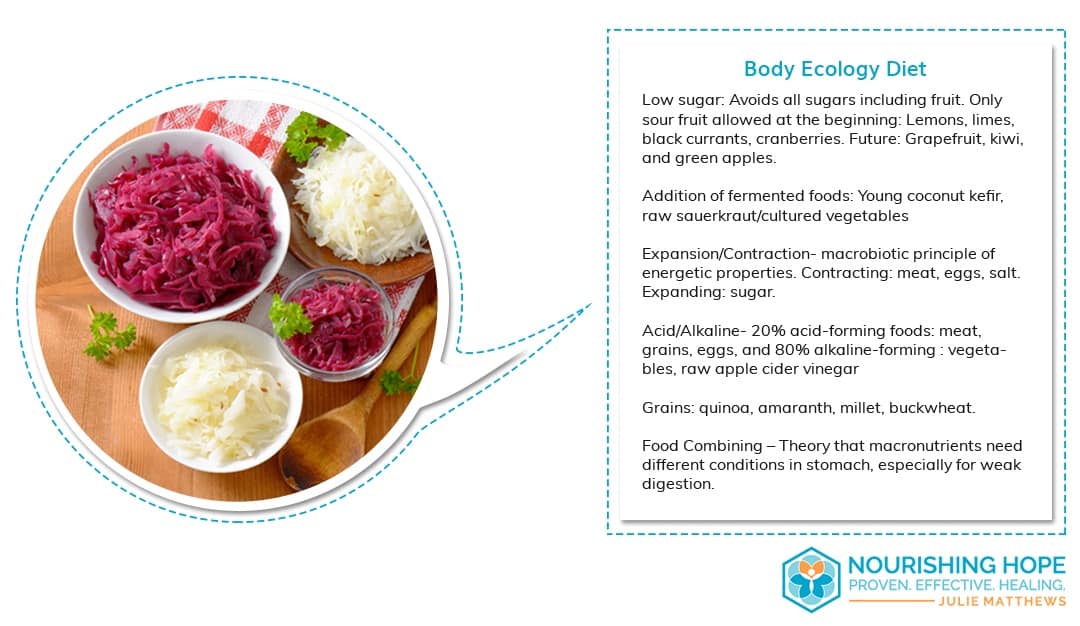
Nightshade-Free Diet
The nightshade family is a group of fruits and vegetables. Tomatoes and white potatoes are two popular foods, but they are also nightshades. Nightshades are a known inflammatory food, as they contain alkaloids, which can act like a toxin. 20 Many children with autism21 or other neurological disorders and autoimmune conditions struggle to process these toxins through their detoxification pathway, and this results in inflammation, leaky gut, and neuropsychiatric disorders. Alkaloids (found in nightshades) aggravate gastrointestinal symptoms. If you suspect your client has a reaction to nightshades, try a short elimination diet and see if symptoms improve.
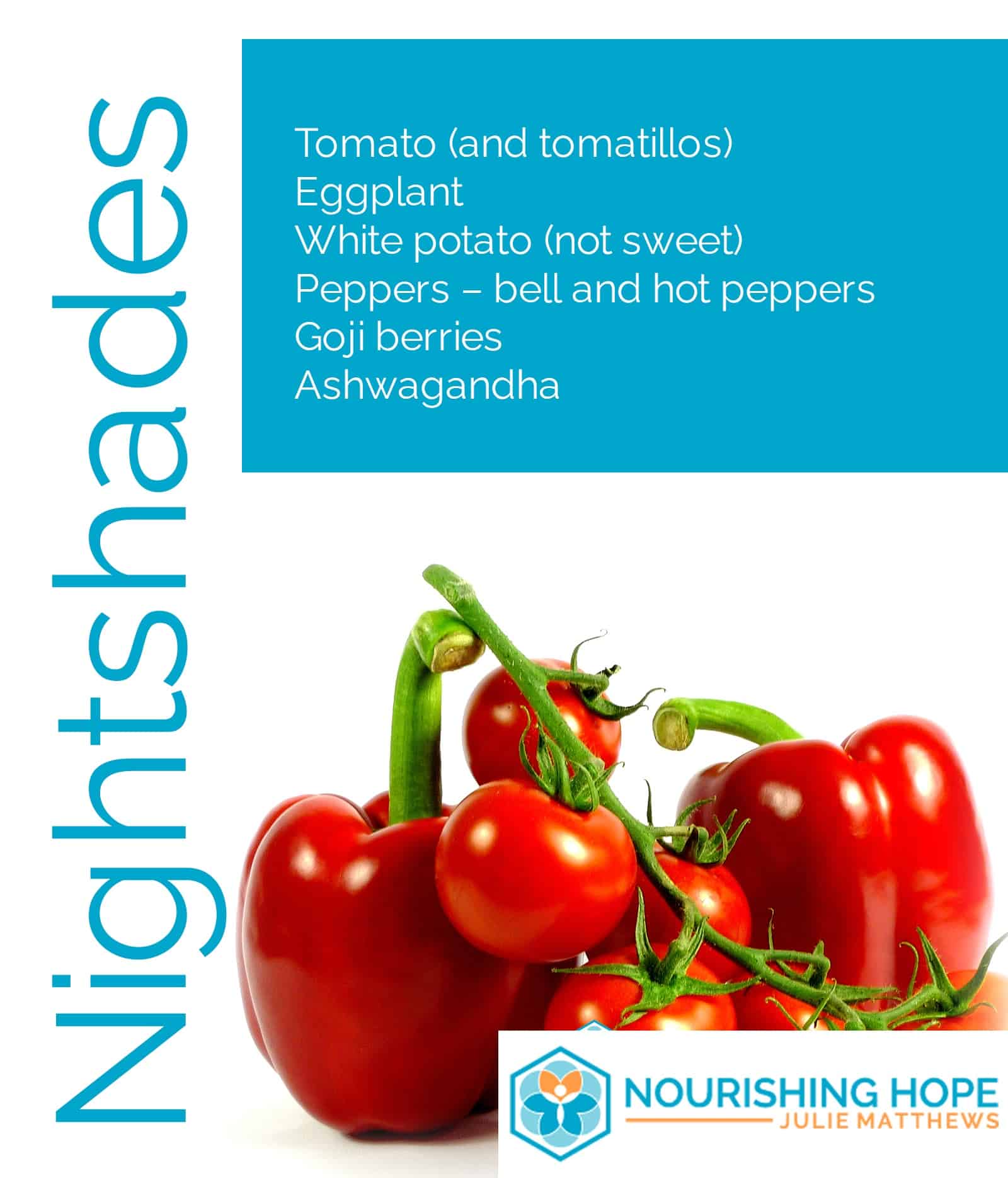 Nightshades are found in tomatoes, peppers, eggplant, and white potatoes.
Nightshades are found in tomatoes, peppers, eggplant, and white potatoes.
Nightshades include:
- Tomato (and tomatillos)
- Eggplant
- White potato (not sweet)
- Peppers – bell and hot peppers
- Goji berries
- Ashwaganda
BioIndividual Nutrition and Therapeutic Diets
Therapeutic diets are about removing the foods that cause the person problems, and addition nourishing foods to help them heal. But as you can see, even good nutritious healthy foods can be a problem for some people. If the right foods are not removed, the diet you recommend for your client or patient may be ineffective, or even cause further inflammation and problems.
If you are a parent (or adult) with ADHD, autism, or other neurological condition, you can learn much more on how to choose and implement the best diet for your unique BioIndividual Nutrition needs in my Nourishing Hope for Healing Kids program.
If you are a practitioner, download my guide, 8 Clinical Nutrition Cases That Will Change the Way You Practice, and check out my BioIndividual Nutrition Training to learn more about how you can incorporate BioIndividual Nutrition into your practice.
Share your experience on special diets with us in the comment section below.
References:
- https://www.ncbi.nlm.nih.gov/m/pubmed/20696007/
- https://www.tandfonline.com/doi/abs/10.1080/13590840050000861
- https://www.ncbi.nlm.nih.gov/pubmed/10779289
- https://www.ncbi.nlm.nih.gov/pmc/articles/PMC4322780/
- https://www.ncbi.nlm.nih.gov/pmc/articles/PMC4604636/
- https://www.ncbi.nlm.nih.gov/pubmed/21296237/
- https://www.ncbi.nlm.nih.gov/pmc/articles/PMC3174969/
- https://journals.lww.com/jrnldbp/Abstract/2006/04002/Frequency_of_Gastrointestinal_Symptoms_in_Children.11.aspx
- https://www.ncbi.nlm.nih.gov/pubmed/24897165
- https://www.biorxiv.org/content/10.1101/494187v1
- https://www.ncbi.nlm.nih.gov/pmc/articles/PMC5647120/
- https://www.ncbi.nlm.nih.gov/pubmed/28808808
- https://www.ncbi.nlm.nih.gov/pubmed/21911305
- https://gut.bmj.com/content/66/7/1241
- https://www.sciencedirect.com/science/article/abs/pii/S0016508513014078
- https://www.ncbi.nlm.nih.gov/pubmed/8269884
- http://www.bu.edu.eg/portal/uploads/Medicine/CLINICAL%20&%20CHEMICAL%20PATHOLOGY/2655/publications/Eman%20Gamal%20Behiry_306_JIPBSV4I304.pdf
- https://www.ncbi.nlm.nih.gov/pubmed/20705664
- https://www.ncbi.nlm.nih.gov/pmc/articles/PMC6306734/
- https://www.ncbi.nlm.nih.gov/pubmed/18399356
- https://www.sciencedirect.com/science/article/pii/S0306987799910460
- https://www.ncbi.nlm.nih.gov/pubmed/21651783
- https://www.ncbi.nlm.nih.gov/pubmed/15673999
- https://www.ncbi.nlm.nih.gov/pmc/articles/PMC4217462/
- https://www.ncbi.nlm.nih.gov/pmc/articles/PMC5872787/




0 Comments